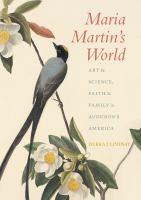
Art has long been incredibly important to the development of science. The current exhibit in the Sanders Science Library, “Picturing Nature: The History of Scientific Illustration,” highlights a sampling of the books in our collection that chronicle the history of anatomical sketches, botanical paintings, and biological drawings.
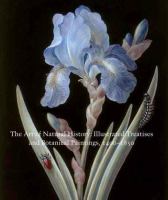 The Art of Natural History: Illustrated Treatises and Botanical Paintings, 1400-1850 “Making knowledge visible” is how one 16th-century naturalist described the work of the illustrator of botanical treatises. His words reflected the growing role played by illustrators at a time when the study of nature had been assuming new authority in the world of learning. An absorbing exploration of the relationship between image and text, this collection considers how both aided the development and transmission of scientific knowledge. – from the publisher
The Art of Natural History: Illustrated Treatises and Botanical Paintings, 1400-1850 “Making knowledge visible” is how one 16th-century naturalist described the work of the illustrator of botanical treatises. His words reflected the growing role played by illustrators at a time when the study of nature had been assuming new authority in the world of learning. An absorbing exploration of the relationship between image and text, this collection considers how both aided the development and transmission of scientific knowledge. – from the publisher
 The Paper Zoo: 500 Years of Animals in Art As children, our first encounters with the world’s animals do not arise during expeditions through faraway jungles or on perilous mountain treks. Instead, we meet these creatures between the pages of a book, on the floor of an obliging library. Down through the centuries, illustrated books have served as our paper zoos, both documenting the world’s extraordinary wildlife in exquisite detail and revealing, in hindsight, how our relationship to and understanding of these animals have evolved over time. In this stunning book, historian of science Charlotte Sleigh draws on the ultimate bibliophile’s menagerie—the collections of the British Library—to present a lavishly illustrated homage to this historical collaboration between art and science. – from the publisher
The Paper Zoo: 500 Years of Animals in Art As children, our first encounters with the world’s animals do not arise during expeditions through faraway jungles or on perilous mountain treks. Instead, we meet these creatures between the pages of a book, on the floor of an obliging library. Down through the centuries, illustrated books have served as our paper zoos, both documenting the world’s extraordinary wildlife in exquisite detail and revealing, in hindsight, how our relationship to and understanding of these animals have evolved over time. In this stunning book, historian of science Charlotte Sleigh draws on the ultimate bibliophile’s menagerie—the collections of the British Library—to present a lavishly illustrated homage to this historical collaboration between art and science. – from the publisher
Maria Martin’s World: Art & Science, Faith & Family in Audubon’s America Maria Martin (1796-1863) was an evangelical Lutheran living in Charleston, South Carolina, when she met the famous naturalist and ornithologist John James Audubon. Audubon was impressed with Maria’s artistic talents and immediately began instructing her as a background artist, using her botanical depictions to embellish his exquisite bird paintings. Martin was the only female background artist Audubon worked with and her finely rendered botanicals and insects appear in volumes two and four of The Birds of America (1830-1838). Until now, her contributions have been unknown to all but the most astute students of natural history and art history and a close circle of family and friends. – from the publisher
 The Fabric of the Body: European Traditions of Anatomical Illustrations This is the first English-language book on the subject of European anatomical illustration to be published in more than 50 years. It offers a fascinating survey and anthology of the major developments, styles, and trends in anatomical illustration over more than 700 years. The subject is especially significant since sophisticated anatomy books were widely distributed as early as the mid-1500s, with illustrations providing the primary means of communication. By documenting this history, this book shows how anatomists and their collaborating artists presented the important aspects of their subject to doctors, medical students, and others. As a record of key developments in medicine and surgery, this lavishly illustrated book will appeal to anyone with an academic interest in anatomy or illustrative art and figure drawing. – from the publisher
The Fabric of the Body: European Traditions of Anatomical Illustrations This is the first English-language book on the subject of European anatomical illustration to be published in more than 50 years. It offers a fascinating survey and anthology of the major developments, styles, and trends in anatomical illustration over more than 700 years. The subject is especially significant since sophisticated anatomy books were widely distributed as early as the mid-1500s, with illustrations providing the primary means of communication. By documenting this history, this book shows how anatomists and their collaborating artists presented the important aspects of their subject to doctors, medical students, and others. As a record of key developments in medicine and surgery, this lavishly illustrated book will appeal to anyone with an academic interest in anatomy or illustrative art and figure drawing. – from the publisher
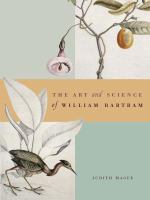 The Art and Science of William Bartram William Bartram’s love of nature led him to explore the environs of the American Southeast between 1773 and 1777. Here he collected plants and seeds, kept a journal of his observations of nature, and made drawings of the plants and animals he encountered. The completed drawings were sent to his patron in London, and these make up the bulk of the collection held at London’s Natural History Museum. The Art and Science of William Bartram brings together, for the first time, all sixty-eight drawings by Bartram held at the Natural History Museum, along with works by some of the most well-known natural history artists of the eighteenth and nineteenth centuries. The volume explores Bartram’s writings and artwork and reveals how influential he was in American science of the period. – from the publisher
The Art and Science of William Bartram William Bartram’s love of nature led him to explore the environs of the American Southeast between 1773 and 1777. Here he collected plants and seeds, kept a journal of his observations of nature, and made drawings of the plants and animals he encountered. The completed drawings were sent to his patron in London, and these make up the bulk of the collection held at London’s Natural History Museum. The Art and Science of William Bartram brings together, for the first time, all sixty-eight drawings by Bartram held at the Natural History Museum, along with works by some of the most well-known natural history artists of the eighteenth and nineteenth centuries. The volume explores Bartram’s writings and artwork and reveals how influential he was in American science of the period. – from the publisher
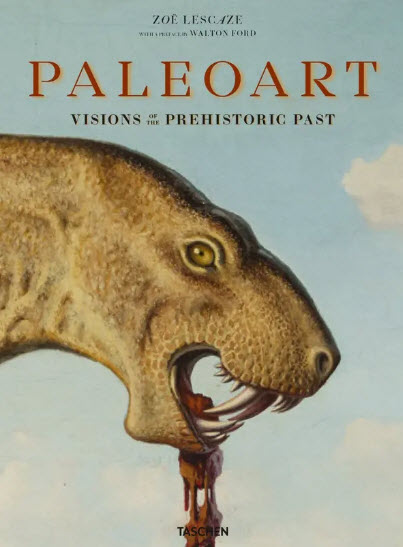 Paleoart: Visions of the Prehistoric Past It was 1830 when an English scientist named Henry De la Beche painted the first piece of paleoart, a dazzling, deliciously macabre vision of prehistoric reptiles battling underwater. Since then, artists the world over have conjured up visions of dinosaurs, woolly mammoths, cavemen, and other creatures, shaping our understanding of the primeval past through their exhilarating images. In this unprecedented new book, writer Zoë Lescaze and artist Walton Ford present the astonishing history of paleoart from 1830 to 1990. – from the publisher
Paleoart: Visions of the Prehistoric Past It was 1830 when an English scientist named Henry De la Beche painted the first piece of paleoart, a dazzling, deliciously macabre vision of prehistoric reptiles battling underwater. Since then, artists the world over have conjured up visions of dinosaurs, woolly mammoths, cavemen, and other creatures, shaping our understanding of the primeval past through their exhilarating images. In this unprecedented new book, writer Zoë Lescaze and artist Walton Ford present the astonishing history of paleoart from 1830 to 1990. – from the publisher
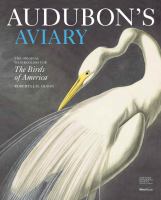 Audubon’s Aviary: The Original Watercolors for The Birds of America It was an awe-inspiring undertaking – to capture images of all the birds of America for the first time. John James Audubon embarked upon this daunting mission in the early nineteenth century. He crisscrossed the then-young nation as an explorer, naturalist, and self-trained artist. Over three decades, Audubon created hundreds of watercolor paintings. He selected a final 435 of these masterworks as the models for the engraved plates of the Havell edition of The Birds of America (1827-38). Audubon’s Aviary returns to these original paintings and tells the story behind this monumental classic with new discoveries about this American icon, as well as fresh insights and engaging quotes from his own compelling writings. – from the publisher
Audubon’s Aviary: The Original Watercolors for The Birds of America It was an awe-inspiring undertaking – to capture images of all the birds of America for the first time. John James Audubon embarked upon this daunting mission in the early nineteenth century. He crisscrossed the then-young nation as an explorer, naturalist, and self-trained artist. Over three decades, Audubon created hundreds of watercolor paintings. He selected a final 435 of these masterworks as the models for the engraved plates of the Havell edition of The Birds of America (1827-38). Audubon’s Aviary returns to these original paintings and tells the story behind this monumental classic with new discoveries about this American icon, as well as fresh insights and engaging quotes from his own compelling writings. – from the publisher
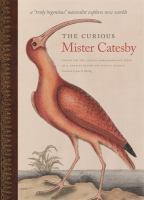 The Curious Mister Catesby: A “Truly Ingenious” Naturalist Explores New Worlds Nearly three centuries ago, Mark Catesby (1683-1749) set sail for the Americas. What he found here would change his life. What he recorded would challenge our view of the world and man’s place in it. Discover the story of this almost forgotten scientist, artist and adventurer, whose extensive studies in the North American wilderness led to the greatest accomplishment in art and science relative to North America before the Revolution. Audubon, who came a century later, stood on his shoulders, as did most leading naturalists of the 18th and 19th centuries. Catesby developed the first scientifically-based theory of bird migration – and was the first to write of the effects of habitat degradation on the survival of species. After a seven-year stay, he returned to England with paintings of plants and animals he had studied. They sufficiently impressed other naturalists that in 1722 several Fellows of the Royal Society sponsored his return to North America. There Catesby cataloged the flora and fauna of the Carolinas and the Bahamas by gathering seeds and specimens, compiling notes, and making watercolor sketches. Going home to England after five years, he began the twenty-year task of writing, etching, and publishing his monumental The Natural History of Carolina, Florida, and the Bahama Islands. – from the publisher
The Curious Mister Catesby: A “Truly Ingenious” Naturalist Explores New Worlds Nearly three centuries ago, Mark Catesby (1683-1749) set sail for the Americas. What he found here would change his life. What he recorded would challenge our view of the world and man’s place in it. Discover the story of this almost forgotten scientist, artist and adventurer, whose extensive studies in the North American wilderness led to the greatest accomplishment in art and science relative to North America before the Revolution. Audubon, who came a century later, stood on his shoulders, as did most leading naturalists of the 18th and 19th centuries. Catesby developed the first scientifically-based theory of bird migration – and was the first to write of the effects of habitat degradation on the survival of species. After a seven-year stay, he returned to England with paintings of plants and animals he had studied. They sufficiently impressed other naturalists that in 1722 several Fellows of the Royal Society sponsored his return to North America. There Catesby cataloged the flora and fauna of the Carolinas and the Bahamas by gathering seeds and specimens, compiling notes, and making watercolor sketches. Going home to England after five years, he began the twenty-year task of writing, etching, and publishing his monumental The Natural History of Carolina, Florida, and the Bahama Islands. – from the publisher
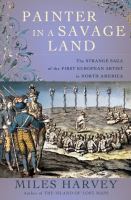 Painter in a Savage Land: The Strange Saga of the First European Artist in North America This is the thrilling story of Jacques Le Moyne de Morgues, the first European artist to journey to what is now the continental United States with the express purpose of recording its wonders in pencil and paint. Le Moyne’s images, which survive today in a series of spectacular engravings, provide a rare glimpse of Native American life at the pivotal time of first contact with the Europeans–most of whom arrived with the preconceived notion that the New World was an almost mythical place in which anything was possible. In 1564 Le Moyne and three hundred other French Protestants landed off the coast of Florida, hoping to establish the first permanent European settlement in the sprawling territory that would become the United States. Their quest ended in gruesome violence, but Le Moyne was one of the few colonists to escape, returning across the Atlantic to create dozens of illustrations of the local Native Americans–works of lasting importance to scholars. Today, he is also recognized as an influential early painter of flowers and plants. – from the publisher
Painter in a Savage Land: The Strange Saga of the First European Artist in North America This is the thrilling story of Jacques Le Moyne de Morgues, the first European artist to journey to what is now the continental United States with the express purpose of recording its wonders in pencil and paint. Le Moyne’s images, which survive today in a series of spectacular engravings, provide a rare glimpse of Native American life at the pivotal time of first contact with the Europeans–most of whom arrived with the preconceived notion that the New World was an almost mythical place in which anything was possible. In 1564 Le Moyne and three hundred other French Protestants landed off the coast of Florida, hoping to establish the first permanent European settlement in the sprawling territory that would become the United States. Their quest ended in gruesome violence, but Le Moyne was one of the few colonists to escape, returning across the Atlantic to create dozens of illustrations of the local Native Americans–works of lasting importance to scholars. Today, he is also recognized as an influential early painter of flowers and plants. – from the publisher
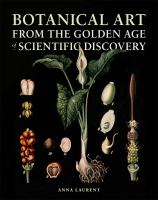 Botanical Art from the Golden Age of Scientific Discovery Throughout the nineteenth and twentieth centuries, wall charts were a familiar classroom component, displaying scientific images at a large scale, in full color. But it’s only now that they’ve been superseded as a teaching tool that we have begun to realize something their ubiquity hid: they are stunning examples of botanical art at its finest. This beautifully illustrated oversized book gives the humble wall chart its due, reproducing more than two hundred of them in dazzling full color. Each wall chart is accompanied by captions that offer accessible information about the species featured, the scientists and botanical illustrators who created it, and any particularly interesting or innovative features the chart displays. And gardeners will be pleased to discover useful information about plant anatomy and morphology and species differences. – from the publisher
Botanical Art from the Golden Age of Scientific Discovery Throughout the nineteenth and twentieth centuries, wall charts were a familiar classroom component, displaying scientific images at a large scale, in full color. But it’s only now that they’ve been superseded as a teaching tool that we have begun to realize something their ubiquity hid: they are stunning examples of botanical art at its finest. This beautifully illustrated oversized book gives the humble wall chart its due, reproducing more than two hundred of them in dazzling full color. Each wall chart is accompanied by captions that offer accessible information about the species featured, the scientists and botanical illustrators who created it, and any particularly interesting or innovative features the chart displays. And gardeners will be pleased to discover useful information about plant anatomy and morphology and species differences. – from the publisher
 Raffles’ Ark Redrawn: Natural History Drawings from the Collection of Sir Thomas Stamford Raffles Sir Thomas Stamford Bingley Raffles (1781–1826) was a passionate scholar of all aspects of the Malay world who amassed a superb collection of drawings and manuscripts during his nearly twenty years in Southeast Asia in the service of the East India Company. Raffles’ Ark Redrawn is a lushly illustrated catalog of the 120 natural history drawings that comprise the Raffles Family Collection, acquired by the British Library in 2007. The story of these colorful drawings of plants, birds, and mammals is a dramatic one: Chinese and French artists from the island of Sumatra composed the bulk of them during one ten-week period in 1824, in order to replace over 2,000 similar drawings, priceless Malay manuscripts, animal specimens, and living animals (including a tiger specially tamed for the voyage!) that perished in a shipboard fire. – from the publisher
Raffles’ Ark Redrawn: Natural History Drawings from the Collection of Sir Thomas Stamford Raffles Sir Thomas Stamford Bingley Raffles (1781–1826) was a passionate scholar of all aspects of the Malay world who amassed a superb collection of drawings and manuscripts during his nearly twenty years in Southeast Asia in the service of the East India Company. Raffles’ Ark Redrawn is a lushly illustrated catalog of the 120 natural history drawings that comprise the Raffles Family Collection, acquired by the British Library in 2007. The story of these colorful drawings of plants, birds, and mammals is a dramatic one: Chinese and French artists from the island of Sumatra composed the bulk of them during one ten-week period in 1824, in order to replace over 2,000 similar drawings, priceless Malay manuscripts, animal specimens, and living animals (including a tiger specially tamed for the voyage!) that perished in a shipboard fire. – from the publisher

